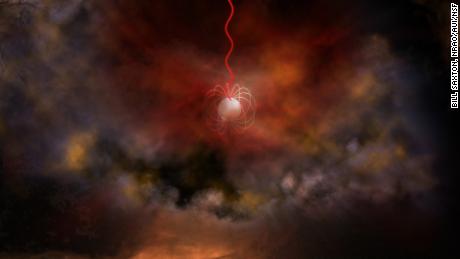We are driven to determine if the “truth is there”. If we had all the pieces, they could fit together and form the bridge to a greater understanding.
The team will collect evidence and analyze data for unexplained events in the sky from a scientific perspective to determine if they are natural or require another explanation. The nine-month study begins in the fall and the results will be shared with the public.
“I’ve spent most of my career as a cosmologist. I can tell you we don’t know what makes up 95% of the universe,” said astrophysicist David Spiergel, who will lead the team.
To cover it up, here are some other unusual things we learned this week.
around the universe
Mysterious fast radio bursts have long baffled astronomers because they don’t understand what causes the bright millisecond flashes in space.
The celestial body continuously released weaker radio waves between repeated bursts. Only one fast radio burst is known to do this, which has made astronomers wonder if there is more than one type of these unexplained phenomena.
Pioneers
It’s a living creature
For the first time in history, scientists have learned how to grow human-like skin with a robotic finger.
According to the researchers, this hack is a step closer to giving robots the appearance of living things.
Researchers are interested in adding a vascular system that can help the skin maintain itself, develop nails, and even sweat. Having human-like hands could one day allow robots to help us with an incredible variety of tasks.
wonderful creatures
Meet Fernando. She’s important in the Galapagos, and we don’t blame you if you sing a cover of ABBA’s “Fernando” in her honor.
The only female tortoise living on Fernandina Island in the Galapagos archipelago was found in 2019. Her discovery surprised scientists because they believed the Fernandina tortoise had become extinct, especially given the island’s highly active volcano.
A new genetic study has revealed that Fernanda is indeed a species indigenous to her island, especially when compared to DNA taken from a sample of male tortoises collected on the island in 1906.
other worlds
The Creative Helicopter fights against the misty shadow of winter on Mars.
Dino mite!
The bones, from an animal that lived 125 million years ago, likely belong to a newly discovered species. But scientists need more information to make a decision.
discoveries
Dive into these stories:




/https://assets.iprofesional.com/assets/jpg/2023/03/550401_landscape.jpg)
